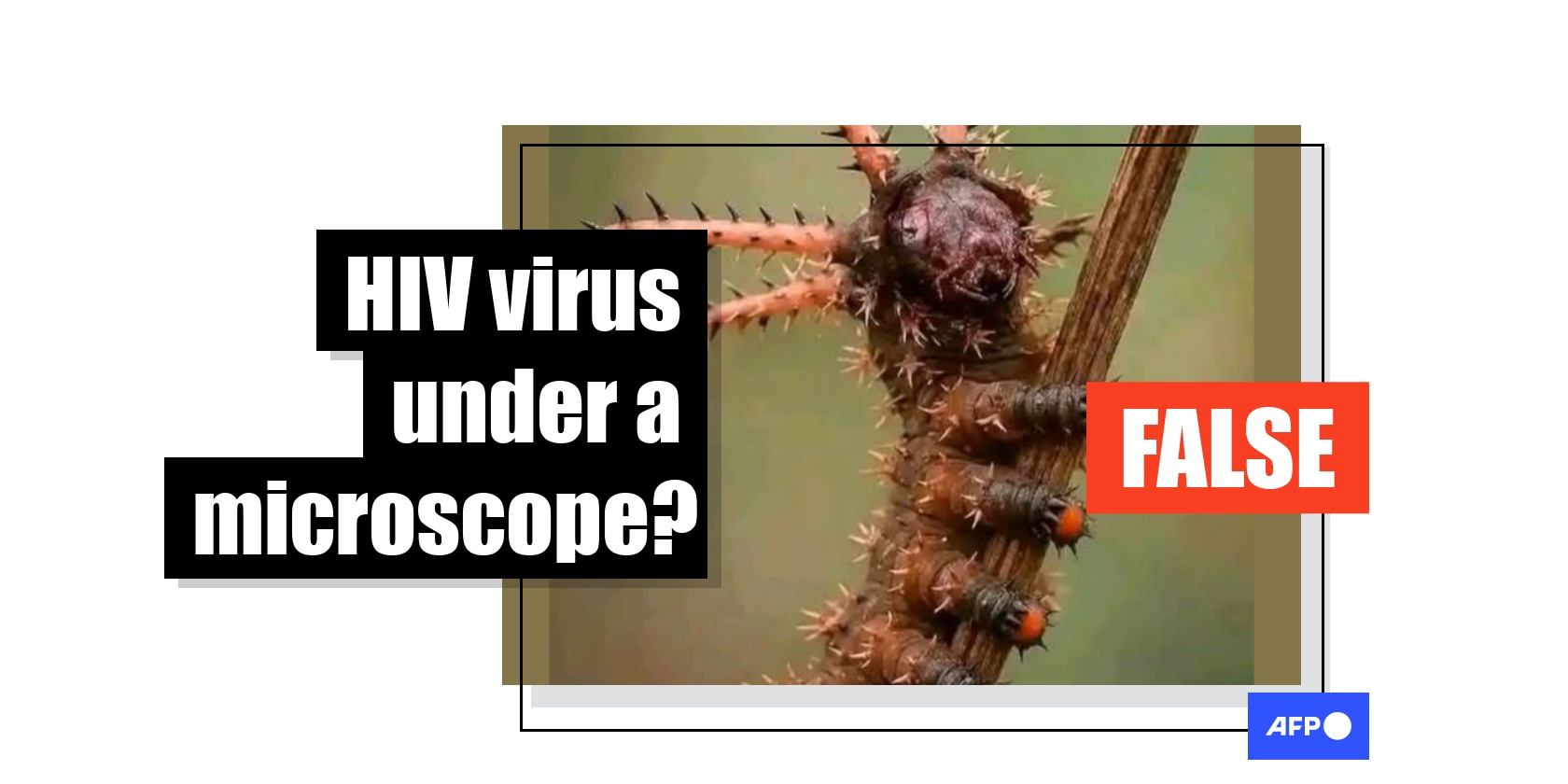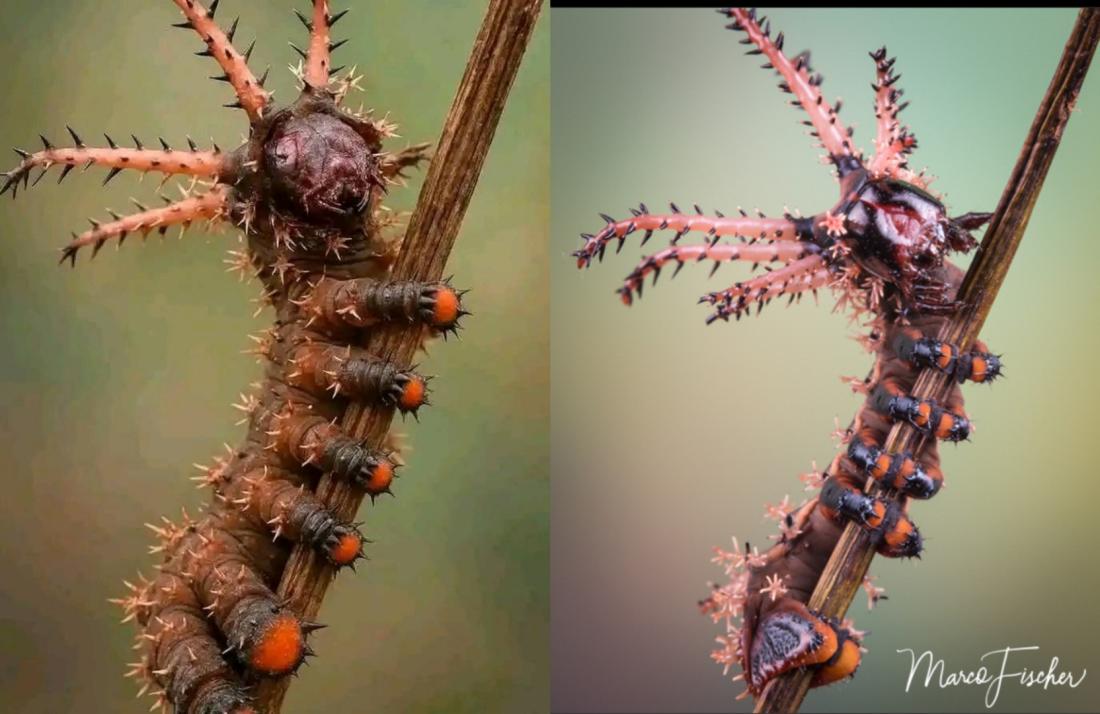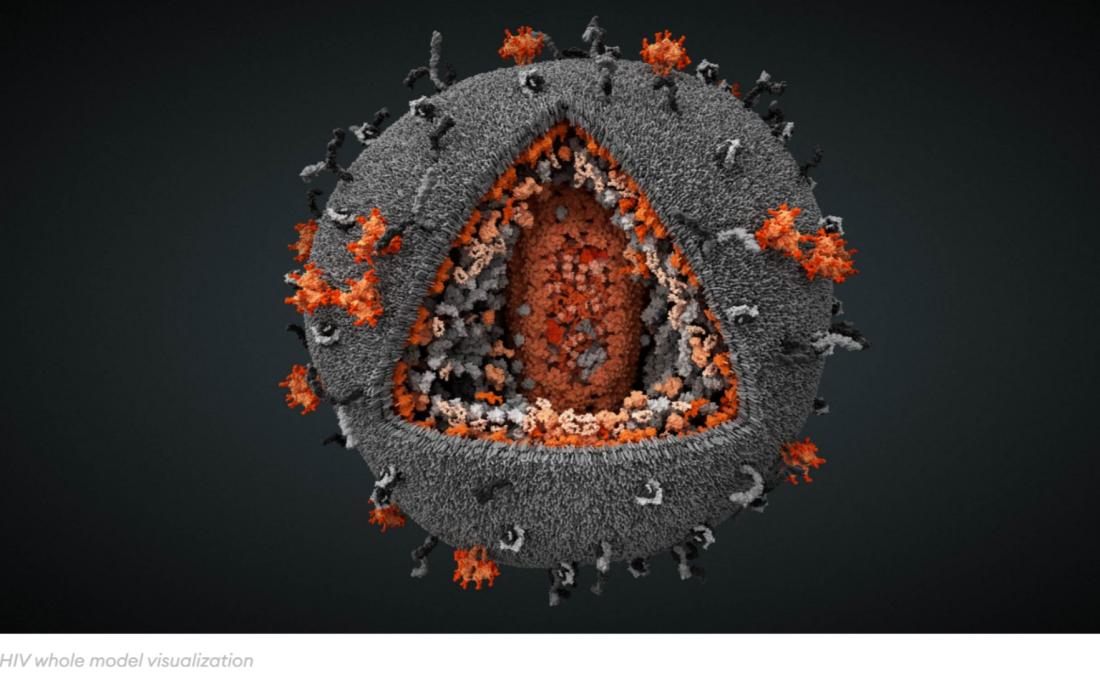
Spiky caterpillar misrepresented as microscopic image of HIV
- Published on September 12, 2025 at 16:19
- Updated on September 15, 2025 at 10:35
- 5 min read
- By Peris GACHAHI, AFP Kenya
“For those who have never seen the HIV virus magnified under an electronic microscope, here it is now. This virus has been resisting medicine because of its anatomy,” reads a Swahili and English Facebook post published in Tanzania on August 12, 2025.

“a HIV virus seen under a microscope (sic),” reads a similar claim shared in Kenya on June 13, 2025.

HIV is a virus that weakens the immune system by attacking white blood cells, making it harder for the body to fight diseases and infections. It spreads through contact with infected bodily fluids such as semen or blood. Without treatment, it can develop into the most serious stage of the infection -- Acquired Immunodeficiency Syndrome, or AIDS (archived here).
In Kenya, roughly 1.38 million adults are living with HIV, while in Tanzania, about 1.55 million adults are affected (archived here and here).
However, the posts claiming that the image shows HIV as seen under a microscope are false.
Insect larva
AFP Fact Check conducted reverse image searches and established that the image shows a caterpillar, and not HIV.
A similar image was published by Switzerland-based photographer Marco Fischer on Instagram on May 23, 2023, identifying the creature as a “Citheronia caterpillar” (archived here).
“This caterpillar looks particularly bizarre. It grows to about 10cm long. It pupates in the soil and a moth hatches later,” his post reads.
The image is also featured on Fischer’s website alongside other photos of different caterpillars (archived here).
In a moth’s life cycle, the caterpillar is the larva that grows from an egg. It then transforms into a cocoon (pupa stage) and emerges as a winged moth (archived here).
Both images show a spiky caterpillar clinging to a twig set against a similar background.
However, closer inspection reveals the creatures are not identical. “The image is most likely mine, but unfortunately, it is completely distorted,” Fischer told AFP Fact Check. “The original image is on my website. It is of the caterpillar: Citheronia regalis.”

By comparison, images of HIV under an electron microscope and 3D model reconstructions show that the virus looks like tiny spheres with a dense core and a spiky outer coat (archived here, here, here, and here).

On August 18, 2025, Tanzania’s health ministry debunked the caterpillar-HIV claim on its official Instagram account, posting an authentic visualisation of the virus (archived here).
The graphic includes Swahili text reading: “The real appearance of the HIV virus.” At the bottom, it says: “The truth about how HIV looks.”
Added comment from FischerSeptember 15, 2025 Added comment from Fischer
Copyright © AFP 2017-2025. Any commercial use of this content requires a subscription. Click here to find out more.
Is there content that you would like AFP to fact-check? Get in touch.
Contact us
